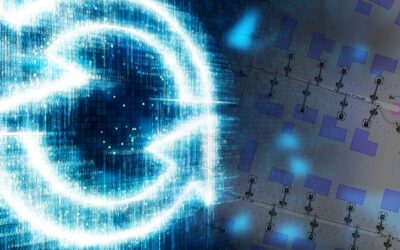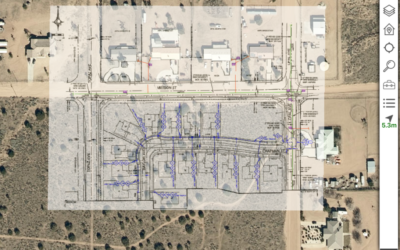Esri’s Utility Network (UN) opens many opportunities for utilities — from real-time integrations, to focused web apps and streamlined workflows, to improved integrations. It captures modern utility infrastructure and more realistically provides a true “digital twin” for modeling and managing critical assets. As a trusted Esri Platinum Business partner, Locana has implemented two of the first three live UN deployments in North America and has not only answered questions, but successfully delivered the Utility Network for multiple clients. Here is our best intel gained through that real-world experience.
- What is the difference between UPDM, the Utility Network, and ArcGIS Pro?
A: At a high level, the UPDM (Utility and Pipeline Data Model) is a data model that defines the structure (tables, fields, domains, etc.) of geospatial data and objects (e.g., pipes, conductors, transformers, and valves). The Utility Network defines the connectivity relationships among objects and the flow of gas/electricity/water from one place to another within a network. ArcGIS Pro is the desktop GIS software for creating, configuring, and managing both the UPDM and the Utility Network.
- Is ArcGIS Pro required to use the Utility Network?
A: Yes. ArcGIS Pro is needed for managing and editing Utility Network data. It has many functions that leverage the power of the Utility Network, including the ability to author attribute rules, configure the network, and implement advanced functionality such as network associations. It is designed specifically to manage and edit service-based GIS data and work with the new branch versioning architecture.
- What are the benefits of implementing the Utility Network?
A: The many benefits of implementing the utility network include streamlined workflows, scalable models, robust system modeling, real-time integrations and out of the box data reporting through network validations. For more examples see Locana’s blog: Esri’s Utility Network – Why and When.
- Can the Utility Network only be viewed and edited through services?
A: For all intents and purposes, yes. Esri recommends accessing Utility Network data exclusively from an enterprise geodatabase via REST services. However, there is an option to use file geodatabases to support the Utility Network with the ArcGIS Pro 2.5 release which could be used in some use cases.
- Are there standardized network configurations (network rules) for different utilities?
A: Yes. Esri has developed network rules templates and a task-based deployment framework to configure the Utility Network for gas, electric, water distribution, sewer, and stormwater to streamline the steps for configuring rules and loading data.
- Can tracing be done via the Utility Network services?
A: Yes! One of the benefits of the Utility Network is that tracing and automation (e.g., Attribute Rules) are exposed via REST services.
- What is the difference between Utility Network and Trace Network in ArcGIS Pro?
A: The Trace Network supports flow direction and is more geared towards use in something like a river network. The Utility Network is more robust and can handle complex features found in utility networks (terminals on features, structure attachments, subnetworks, etc.).
- What steps can my organization take to prepare for Utility Network Migration?
A: The most important Utility Network preparation is to confirm that your data is ready. The UN has specific requirements for network connectivity and topology. It is important to understand what updates need to be made either before or during the data migration. Furthermore, you should confirm that features are snapped and free of overlaps – which will cause network “dirty” areas and limit tracing capabilities. The number of dirty areas can be reduced via tools designed to prepare data for a Utility Network build. Additionally, you should establish a logical naming convention for subnetwork controllers. Finally, it is important to plan for a service-based GIS, including any needed upgrades to your GIS infrastructure, including Portal and ArcGIS Server.
- What is Branch Versioning and how does it work with the Utility Network?
A: Branch versioning is the only versioning type available for the Utility Network. It is similar to traditional versioning, allowing for multiple simultaneous editors. However, it is designed specifically for editing via services. In addition, it has a more flat structure, simplifying administration. More information on Branch Versioning can be found here: Branch Versioning — What is It and How Does It Work?
- What is an association in the Utility Network?
A: Associations in the Utility Network allow for features that are not geometrically coincident to share a relationship and participate in the network validation tools. Associations are useful both for relating objects that don’t participate in the network “flow” (for example a structural attachment association of a transformer to a pole) and for accommodating incomplete data (for example a network association where a meter is connected to a main, but the service line has not yet been mapped). For more examples of how you can leverage associations, see Utility Network Connectively Associations.
- How do containers work?
A: A container is a type of association (a containment association), where features are physically (or virtually) inside another feature. A common example of a container is a station (pump station, regulator station, substation) which can be represented as a single map feature. This feature can be “drilled into” to enable viewing of all the station details (pumps, valves, voltage regulators, etc.).


